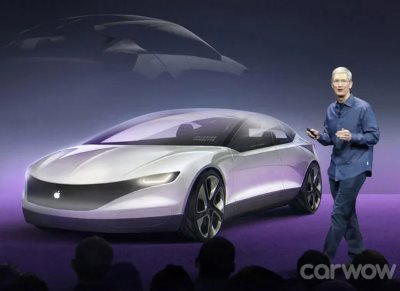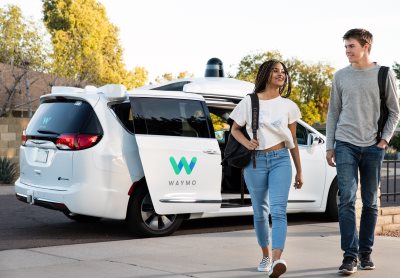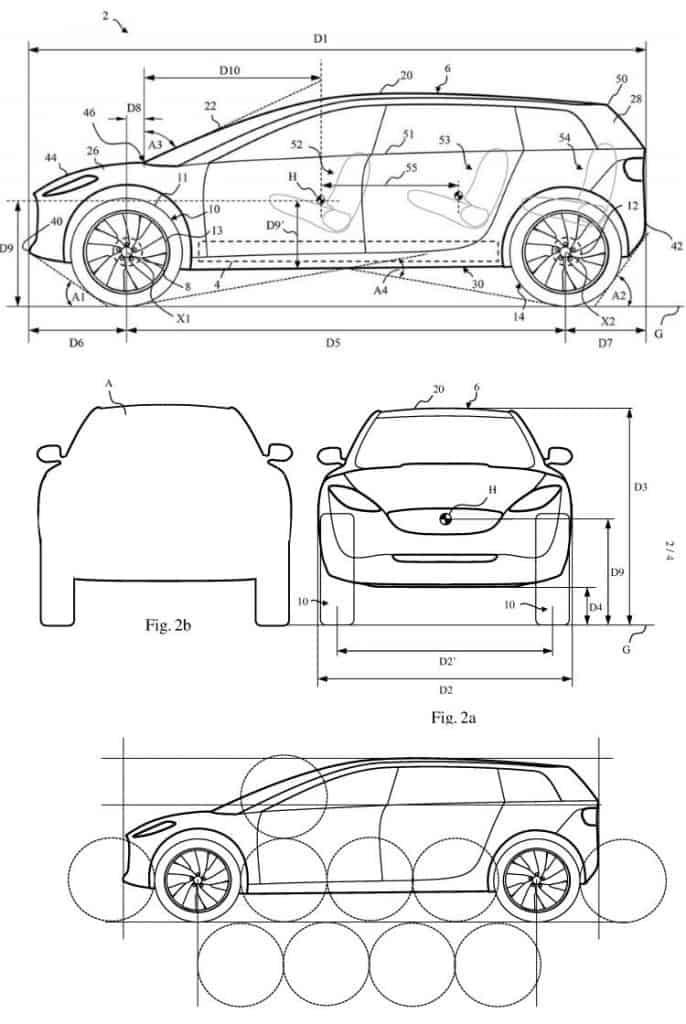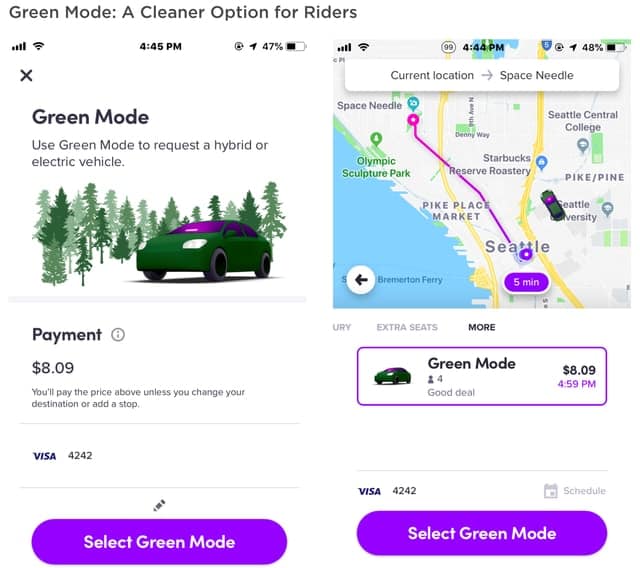For the past few years, there’s been more and more rumours that some of the big tech firms are working on self-driving cars, which will predominantly be plug-in electrics.
Some companies – such as Apple and Dyson – have only given limited information about their programmes. Others – like Google – are fairly open about their endeavors. When some of the smartest engineers in the smartest tech companies put their minds to something, the results are exciting!
Apple iCar

In late 2014, Tim Cook (Apple CEO) approved Apple’s electric car project – named Titan internally – and they actively recruited for the project throughout 2015, and also met with officials from GoMentum Station (a test centre for self driving vehicles) and California’s DMV.
The news died down a bit in 2016 but in 2017 it ramped up again. In June 2017, Tim Cook said they were “focusing on autonomous systems”, dampening speculation that Apple would be building a new vehicle from the group-up and being fully self-driving (like Tesla are doing). In August 2017, 17 Titan members left to join another self-driving company. After more speculation, Tim Cook said that is working on autonomous-car technology, possibly using a Fiat Chrysler as a test vehicle.
Testing of a possible ‘iCar’ has carried on, and Apple had 27 self driving cars registered with the CA DMV in January 2018. There’s still no confirmation of whether Apple will actually create their own vehicle, or just build self-driving technology and lease this out to car manufacturers.
Car analyst Robert Cihra personally believes that they are working on their own car, however, saying “Given the market’s sheer size and parallels to Apple’s historical MO, we remain convinced that it will inevitably be drawn into launching its own car”.
Time will tell whether an iCar – or just leased-out Apple technology – is the scope of project Titan.
Update: an update from 9th June 2019 is that Apple have purchased self-driving startup Drive.ai, a cash-strapped startup from Texas. It is thought that this purchase might be more to acquire Drive.ai’s expert employees instead of any specific technology/intellectual property. If this purchase is true (and it does seem to be), it is at least a fresh insight into what Apple might be working on.
Google/Waymo

Google’s secretive ‘X lab’ (which is their experimental department) started a self-driving project in 2009, and a modified version of a Toyota Prius (with Google self-driving tech) was given a testing go-ahead by the Nevada DMV in May 2012. Various manned tests (aka self-driving cars, but with a driver behind the wheel ‘just in-case’) were carried out from 2012-2013 onwards, but the first unmanned test of a Google car took place in 2015 – a car with no steering wheel, pedals, driver or police escort – marking a big moment in self driving history!
After some corporation restructuring, this self-driving project was split out from Google and was named Waymo. It’s still owned by the same parent company (Alphabet, who also own Google).
Waymo are developing self-driving electric cars, not for direct purchase like many car manufacturers, but instead for ride-hailing (i.e. to compete with Uber and Lyft). To quote their website:
“Imagine if everyone could get around easily and safely, without tired, drunk or distracted driving. Time spent commuting could be time spent doing what you want, as the car handles all of the driving.”
Waymo currently drive 25,000 autonomous miles each day, and they’re actively inviting citizens from Phoenix, Arizona to join their early rider program. As of 5th December 2018, Waymo have started charging customers for self-driving rides in their Phoenix pilot. Prices are slightly ahead of Lyft, with a 3 mile (4.8 km) trip – averaging 15 minutes – costing around $7.59, compared to Lyft’s $7.22.
Dyson
Dyson – the UK’s premium vacuum manufacturer (who also work with other high end gadgets like their ‘supersonic hair dryer’) – have been known to be working on an electric car for a few years. But they’ve very recently hit the headlines, by saying in October 2018 that they will be opening an electric car factory in Singapore. This is to position itself close to the “high-growth [Asian] markets”, and allow it to compete with US EV companies more easily.
Dyson have had 400+ engineers working on their electric car project since 2015, and Dyson’s initial investment in their EV program is £2.5 billion ($3.2 billion). The resulting electric car(s) will be built from the ground up, and they won’t be cheap:
“We don’t have an existing chassis… We’re starting from scratch. What we’re doing is quite radical.”
“Maybe the better figure is how much of a deposit they would be prepared to put down.”
This is from James Dyson, the creator of Dyson.
The car won’t be fully self-driving, but it will have “some” autonomous technology.
Apart from the new information about the Singapore factory, and a mooted 2020/2021 launch date, no other news is known about the Dyson electric car. But things are certainly ramping up for this enterprising UK firm, and the results should definitely be interesting!
May 26th update: A little bit more information is now known. We still do not have specifics, however a Dyson patent shows off the following diagrams which James Dyson has told staff “provide a glimpse of some of the inventive steps” they are following:

This shows off a possible Tesla Model X rival: a slightly lower down SUV with a sleek shape and fairly narrow tires to minimize on rolling resistance.
Uber
Uber – the ride-hailing company in competition with Lyft (and soon Waymo) – hit the news in 19th March 2018 for all the wrong reasons: one of their self-driving test cars hit and killed a cyclist. The self-driving car detected the cyclist (who was pushing their bike across the road) 6 seconds before impact, all sensors were working correctly, but for some reason the car did not stop.
This tragic news put a halt to Uber self-driving car program for a few months, but it was also the first time that most people learned that Uber had a self-driving car program.
Uber are using Volvo XC90 crossover SUV hybrid cars for their self-driving program, adapting them with various self-driving hardware and proprietary software.
At this stage, it is still an early programme (especially after Elaine Herzberg’s death, the woman crossing the road when hit) and it does look like Uber will be looking at hybrids not fully-green vehicles for this project.
Naturally these cars won’t be available to purchase, either – they’ll purely be for ride-hailing and be part of Uber’s fleet, slowly replacing (or complementing) the current Uber drivers.
Lyft
Lyft is probably Uber’s biggest rival: they are another ride-hailing company. They are based in California and had over $2.2 billion revenue last year (compared to Uber’s $11.3 billion revenue), which was also the year that they became carbon-neutral overall. Whilst this was great to hear, they did this by purchasing carbon credits which was necessary due to their gasoline-fuelled fleet. However in Feburary 2019, Lyft went further and have said that they will be rolling out electric cars into their fleet to actually improve their drive-time emissions.
Lyft will empower their customers in choosing greener cars, too, by rolling out a ‘green mode’ in the Lyft app which allows users to specificaly opt for an electric (or hybrid) car:

This green mode was originally rolled out in Seattle and Atlanta, but it is expected to be rolled out in other American cities throughout the rest of 2019.
Interestingly (but not surprisingly!), Lyft has said that their drivers had frequently asked them to introduce electric car support to help reduce their fuel costs and therefore improve profits: “These efforts will provide cleaner transportation options for Lyft riders, and increase net earnings for our driver community. Once adopted widely, EVs hold the promise of making cities more livable by dramatically reducing air pollution”.